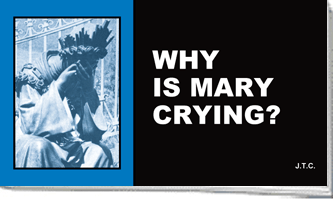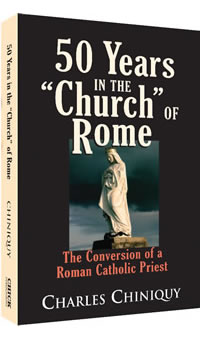Indulgences Granted for Worship of Mary
Pope Benedict XVI granted plenary indulgences to anyone who worshiped before a statue of the Virgin Mary goddess before December 8, 2005. That was the 40th anniversary of the end of the Vatican II Ecumenical Council.
The proclamation granted a get-out-of-purgatory pass to anyone who "...offer[ed] an open demonstration of devotion to the Virgin Mary in front of a statue or image of the Madonna Immacolata displayed for public worship." Although the Vatican officially denies that Catholics "worship" Mary, they, nevertheless, include worship of her images in their instructions.
To understand the extent of the blasphemy of the Virgin Mary goddess elbowing Jesus aside to take his place, we need only to look at some of the prayers to her. Jim Tetlow quotes from one of those prayers in his book, Messages from Heaven. "In thy hands I place my eternal salvation and to thee do I trust my soul." (Devotions in Honor of Our Mother of Perpetual Help, by Liquori.) The prayer goes on to state that one can escape judgment by Jesus "...because by one prayer from thee (Mary) He (Jesus) will be appeased."
In the mind of the average Roman Catholic, the Virgin Mary goddess is their first resort for favors from God. Ex-priest Charles Chiniquy describes in his book, 50 Years in the Church of Rome, how a child is prepared for first communion. He is led through a series of questions about the difference in attitude between his father and his mother when he is being disciplined.
When the child agrees that his mother is usually more merciful than his father, the comparison is drawn between Mary and Jesus. Jesus is the harsh and angry father and Mary the merciful intercessor. The child is taught to go to Mary for mercy and forgiveness, who will then appease the angry judgment of a stern Jesus.
In this way, Mary becomes the dominant intercessor and Jesus the fearsome Judge in the mind of the child. This, then, forms the lifelong perspective of the good Catholic. For the rest of his life, the Virgin Mary goddess becomes the primary deity for the good Catholic, the central focus of his worship.
- See more articles on related topics:
- Catholicism
- Virgin Mary
- Purgatory
- Prayer to Mary and Saints
Other Articles from March/April 2006:
- One Heartbeat Away Anwers. People demand answers.
- Cardinal Calls Immigrant Bill a 'Vicious' Assault
- Intelligent Design, Is There Evidence?
- A Message From Jack Chick About Alberto Rivera
- Chick Mail Bag March-2006
- Veteran Missionary Logs 40 Years and 1 Million Tracts
- Iranian President Looking for Muslim Messiah
- Court Strips Parents of Education Rights
- History Proves the Power of the KJV
- Prison Ministry Letters: March-2006
- Tract Passing Tips - March 2006
- World Cup Soccer Outreach Planned
More on Catholicism:
Products of Interest:

Why Is Mary Crying?
Devotion to Mary doesn't please her. It breaks her heart.-

50 Years in the Church of Rome
368 pages
This classic work shows how this priest began to question Catholic teachings until he became saved, and led his entire parish to salvation. -

Spanish - Messages from Heaven
A biblical examination of the apparitions of the Virgin Mary and other supernatural activity in the end times.



